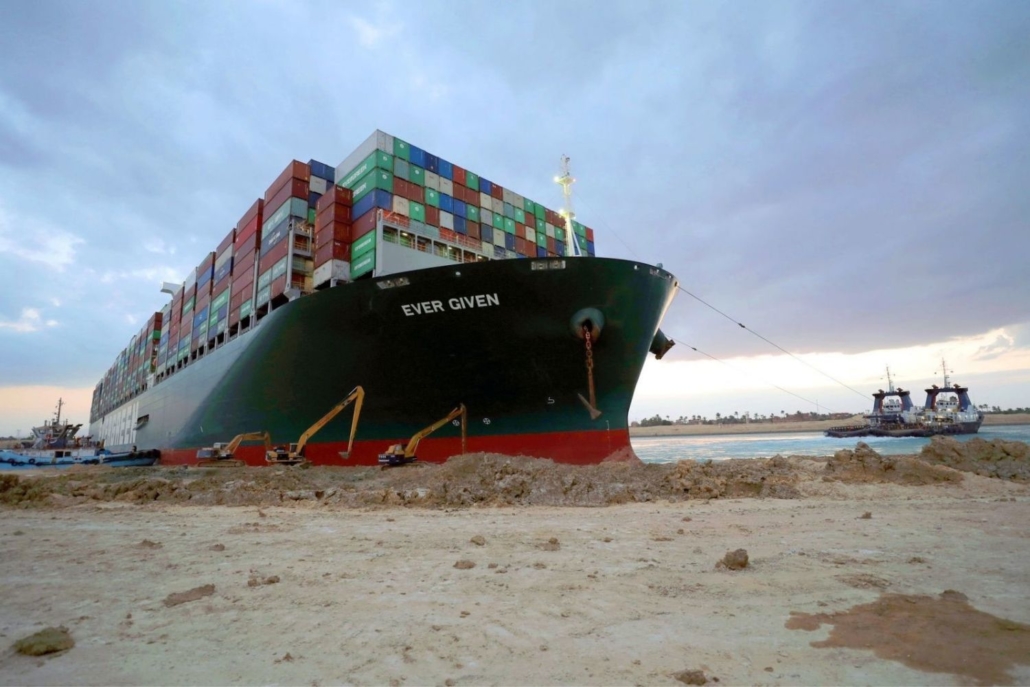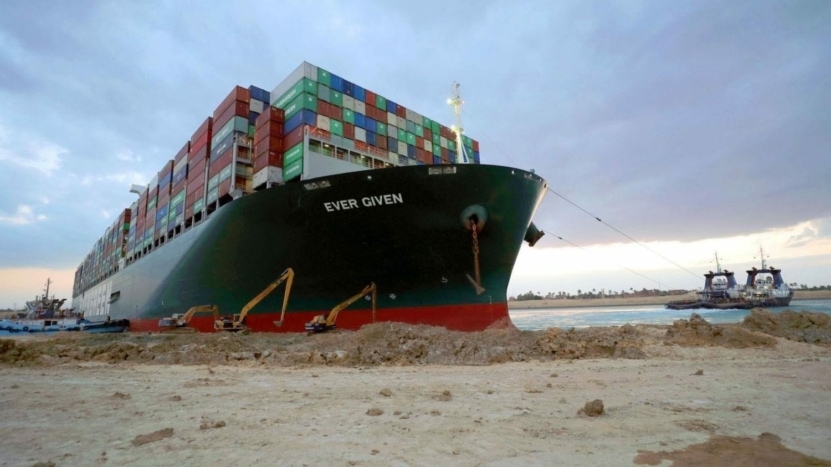
This is why I know that Komodo dragons eat deer alive (Komodo saliva paralyzes the deer), why I know about the mating habits of cicadas (they only live a few weeks and come out every 13 or 17 years); and why 1969 Camaros are cool (apparently, they attracted women in 1969 as long as the driver also had bell-bottoms, an unbuttoned shirt and a really hairy chest).
And YouTube came through for me again this weekend when I received this 4-minute video about the huge container ship stuck in the Suez Canal.
For anyone not following the news, one of the world’s largest container ships got stuck in the Suez Canal last week, and the implications are both staggering and fascinating.
According to the BBC, 12% of world trade travels through the Suez canal. This works out to about $400 million of goods every hour; about 3.3 million tons of goods every hour; and about $10 billion worth of goods every day.
The ship itself weighs 200,000 tons and was wedged about 45 feet deep into the sand.
It would have taken about 80 of the world’s largest tugboats to get it unstuck – and there is nowhere near enough room in the canal for that many tugboats.
The ship was finally freed up a bit last night with the help of a lot of sand-dredging and an unusually high tide.
The ship ostensibly got stuck in the first place when an exceptionally strong gust of wind blew the ship into the bank.
“JUST IN TIME” INVENTORIES & BROKEN SUPPLY CHAINS
This story interested me so much b/c it is a perfect example of how a supply chain breaks and it is another example of how precarious and intertwined our world economy is.
It is also an amazing coincidence to see the world’s supply chain broken in this manner after so many other supply chains were broken as a result of COVID.
COVID broke supply chains b/c so many factories and transportation hubs were shut or slowed down b/c of COVID concerns.
So even though the Suez Canal only impacts 12% of world trade, its impact on supply chains is much greater.
This is b/c so many items necessary for manufacturing pass through the canal, including semi-conductors, furniture, heavy equipment parts, footwear, and batteries.
Severely impacted companies include Caterpillar, Amazon and IKEA.
Exacerbating these issues are “just in time” inventory practices, as firms no longer carry stockpiles of parts or inputs like they did in the old days; they instead use technology to ensure that necessary inputs (parts) show up just in time when they need them.
MORE INFLATION
So, what the Suez Canal crisis really means is more inflation due to another broken supply chain and the resulting increase in production costs.
We will probably not see these increased costs turn into higher retail prices for a few months, but we definitely will.
And when those reports surface as inflation warnings, rest assured that rates will likely climb as a result.
But, as I have stated in previous blogs, as supply chains open up (as COVID abates and the Suez Canal opens), input costs and therefore prices should hopefully fall.
This is just another reminder though of how events across the world that do not seem like that big of a deal can affect the mortgage and real estate industries.
It is also another reminder of why nobody can predict which way markets will turn, as nobody saw the Suez Canal crisis coming or its implications (much like COVID blindsided us all).
Photo Courtesy of CNN
Jay Voorhees
Founder/Broker | JVM Lending
(855) 855-4491 | DRE# 1197176, NMLS# 310167
























